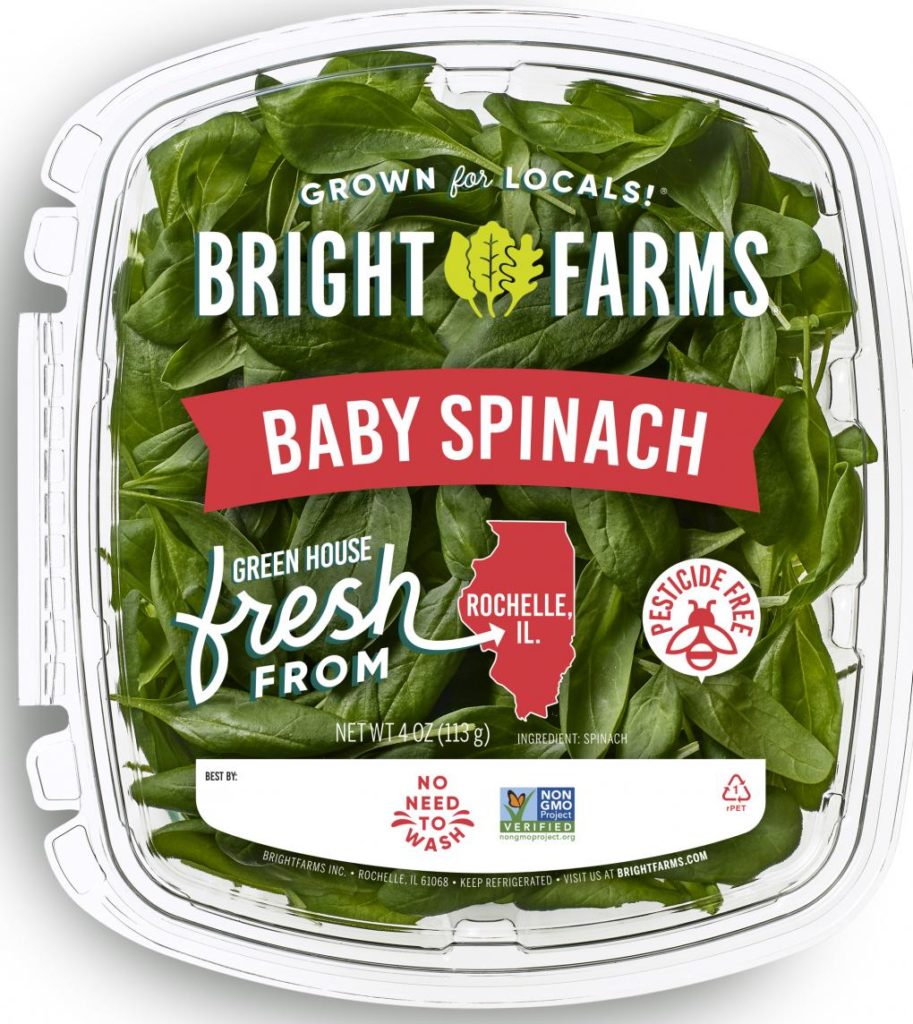According to the FDA, BrightFarms extended its recall of salad greens to include BrightFarms branded Fresh Baby Spinach from the American marketplace due to suspected Salmonella contamination. The recall expansion included packaged salad greens past the expiration date. It was produced in its Rochelle, Illinois (Ogle County) greenhouse farm sold in Illinois, Wisconsin, Iowa, Indiana, and Michigan due to potential contamination Salmonella. The recalled products were packaged in clear, plastic clamshells with “best by” dates through 7/26/2021. The products were sold by retailers listed in the July 15 recall notice. @ https://www.fda.gov/safety/recalls-market-withdrawals-safety-alerts/brightfarms-announces-voluntary-recall-expansion-packaged-salad-greens-sold-illinois-wisconsin-iowa
ruth
BrightFarms today initiated a voluntary recall expansion of additional packaged salad greens that are past expiration date and were produced in its Rochelle, Illinois (Ogle County) greenhouse farm sold in Illinois, Wisconsin, Iowa, Indiana and Michigan due to potential contamination with Salmonella.
ruth
The U.S. Department of Agriculture’s Food Safety and Inspection Service (FSIS) announced that Greater Omaha Packing (Omaha, Nebraska) recalled approximately 295,236 pounds of raw beef products intended for non-intact use that may be contaminated with E. coli O157:H7. The raw beef products intended for non-intact use were produced on July 13, 2021. These items were distributed to further processors in Illinois, Indiana, Minnesota, and Nebraska. The problem was discovered when FSIS collected a routine product sample that confirmed positive for the presence of E. coli O157:H7. There have been no confirmed reports of adverse reactions due to the consumption of these products. @ https://www.fsis.usda.gov/recalls-alerts/greater-omaha-packing-recalls-raw-beef-products-due-possible-e.-coli-o157h7
ruth
The FDA reported that Sunshine Mills, Inc. issued a voluntary recall of certain products due to potentially elevated Aflatoxin levels above the acceptable limit. The recalled products include certain lots of Triumph®, Evolve®, Wild Harvest®, Nurture Farms®, Pure Being®, and Elm. No illnesses have been reported in association with these products to date, and no other Sunshine Mills, Inc. pet food products are affected by this announcement. The affected products were distributed in retail stores nationally. There is concern that consumers may have unused portions of the recalled products in their homes because of their long shelf life. @ https://www.fda.gov/safety/recalls-market-withdrawals-safety-alerts/sunshine-mills-inc-issues-voluntary-recall-certain-products-due-potentially-elevated-levels?utm_medium=email&utm_source=govdelivery
Sunshine Mills, Inc. is issuing a voluntary recall of certain products due to potentially elevated levels of Aflatoxin above the acceptable limit. Aflatoxin is a naturally occurring by-product from the growth of Aspergillus flavus and can be harmful to pets if consumed in significant quantities. No
ruth
The CDC, FDA, and local authorities investigate the multistate outbreak of E. coli O121 infections from cake mix. Sick people in this outbreak reported tasting or eating raw cake batter made from various cake mixes. A single brand or type of cake mix has not been linked to the illnesses. Of 16 people with information available, seven have been hospitalized. One person has developed a type of kidney failure (HUS), but no deaths have been reported. Most (75%) of sick people are children under the age of 18. All those sick are female, and illness dates range from Feb. 26 to June 21. Of the eight people interviewed, six reported tasting or eating raw batter made with a cake mix. People said they bought different varieties and brands. Illinois, Iowa, Nebraska, and Ohio have two patients, while Indiana, Massachusetts, Michigan, Oregon, South Carolina, Utah, Virginia, and Washington all have one. Whole genome sequencing showed that bacteria from sick people’s samples are closely related genetically. @ https://www.cdc.gov/ecoli/2021/O121-07-21/index.html
Get the most up-to-date outbreak information here.




